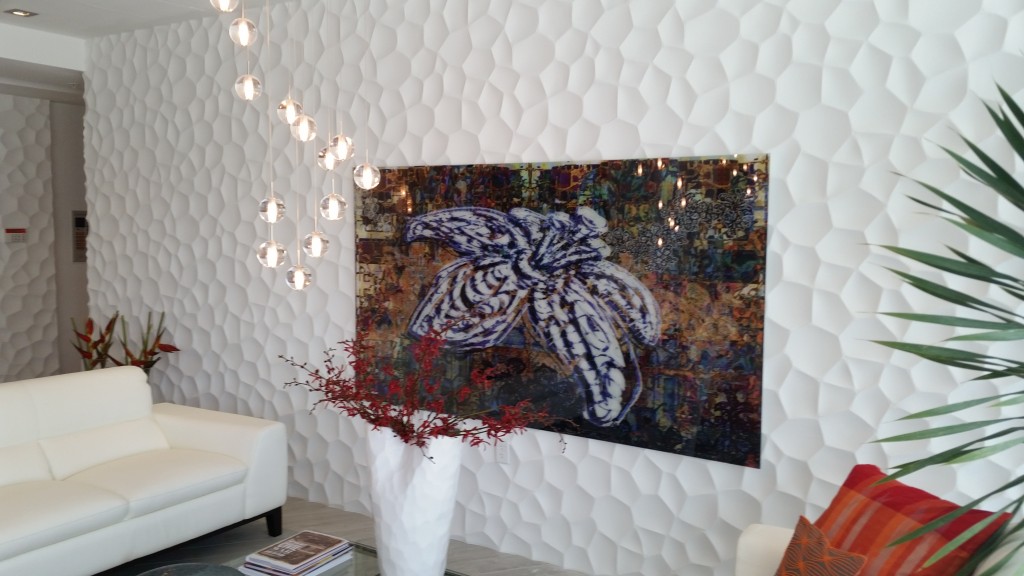Main | About
The bitter winter of 1894-95 destroyed much of Central Florida’s “Orange Belt.” Savvy pioneer, Julia Tuttle, sent orange blossoms from her Miami grove to railroad magnate Henry Flagler, enticing him to extend his tracks south.
 Xavier Cortada, “Julia’s Blossoms,” digital painting, 2014
Xavier Cortada, “Julia’s Blossoms,” digital painting, 2014
A public art project at Collins Park Apartments (Miami-Dade Housing Authority), Miami, FL
Artist’s Statement
In this public art project, I use flowers as a metaphor for a historic incident and a sense of place. I have placed aluminum cut outs of orange blossoms on the facade of this residential building, constructed where a shop called Orange Blossom Hobbies once stood. The floral-themed project also uses the orange blossom to honor Miami’s pioneers — including John Collins, the building’s namesake – and native wildflowers – to commemorate 500 years of Florida history.
It’s not the first time I put flowers at center stage:
At the center of my mural at the entrance of City Hall, you can also find Julia’s blossoms.
“The Incorporators: 1896” depicts city founders Julia Tuttle and Henry Flagler surrounded by the incorporators and images of Miami’s birth: Flagler’s railroad and its workers, the orange blossoms Julia Tuttle sent Flagler to persuade him to bring the railroad to frost-proof South Florida, and the old pool hall where 368 men –many of them from the black community – voted to create the City of Miami on July 28th, 1896.
Here, in this building’s lobby, I bring Julia’s orange blossom to life. The digital work places layers of orange blossoms over the developed cityscape that came afterward, transforming the former ecosystems. I created the art by digitally manipulating and layering pencil drawings of an orange blossom and maps of our County’s development.
It is notable that flowers were the catalysts to my city’s birth. But it really shouldn’t take us by surprise.
Flowers are special:
Flowers magically rise in a triumphant celebration of color and form. They are architectural masterpieces, miniature cathedrals. Continually growing and then decaying. And regenerating.
Flowers hold medicinal powers to combat diseases we have yet to encounter and solve problems we have yet to imagine.
Flowers allow the planet’s pollinators, with whom they co‐evolved, to fulfill their joint responsibility of sustaining life’s fragile web. An intricate and complex biological process makes Earth verdant, sustains all life forms (including humans), and balances the atmospheric gases that accelerate climate change.
Flowers would continue to blanket our planet were it not for the displacement caused by the concrete we’ve poured ‐‐ and the parcels we’ve platted ‐‐ to build our homes and grow our society.
We need to better coexist by better tempering our excessive personal demand, so that our growth is managed in a way that sustains not just humans, but all living beings, with whom we share this planet – and need for our continued survival.
We need to recreate lost habitats, rehabilitate dwindling ecosystems and engage in sustainable practices across all the planet’s longitudes. As kid, I did so across the street.
That is where I planted my first garden.
I hope the viewers of this work are encouraged to share their homes with nature by planting gardens and returning even a small corner of their yards to some semblance of the wilderness that once was.